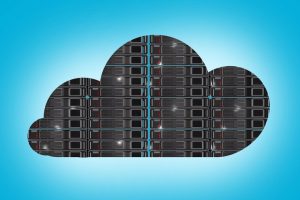Choose the Right VPS Configuration and Setup
Navigating the world of Virtual Private Servers (VPS) can feel daunting. With a vast range of configurations available, selecting the optimal setup for your specific needs is crucial for performance, cost-efficiency, and scalability. This guide breaks down the key considerations, from understanding core resources to anticipating future growth, empowering you to make an informed VPS decision.
Understanding VPS Basics & Core Resources
Before diving into specific configurations, it’s vital to grasp the foundational elements of a VPS. Unlike shared hosting where you share resources with other users, a VPS provides a virtualized dedicated environment. Think of it as having your own slice of a powerful physical server. This offers greater control, reliability, and scalability. The basic building blocks you’ll need to understand are CPU, RAM, Storage (SSD vs. HDD), and Bandwidth. Each plays a distinct role, and balancing them is the key to a well-performing VPS.
CPU (Central Processing Unit): This is the brain of your server, responsible for processing instructions and executing tasks. CPU power is measured in cores. More cores generally mean better performance, especially when handling multiple concurrent processes. Consider the type of application you’ll be running. A simple blog or static website won’t need much CPU, but a database-heavy application or a video encoding server will demand significantly more. Pay attention to the CPU’s clock speed (GHz) as well; a higher clock speed generally means faster processing within a single core.
RAM (Random Access Memory): RAM is your server’s short-term memory. It stores data that the CPU needs to access quickly. Insufficient RAM leads to slow performance, as the server resorts to using the hard drive (which is *much* slower) as virtual memory. Determining RAM needs is often the first step in VPS configuration. Consider how much memory your applications typically consume. A basic web server might get by with 1-2GB of RAM, while a resource-intensive application like a game server or a machine learning platform might require 8GB, 16GB, or even more. Operating systems themselves also require RAM – factor in at least 1GB for the OS.
Storage (SSD vs. HDD): This is where your operating system, applications, and data are stored. There are two primary storage options: Hard Disk Drives (HDDs) and Solid State Drives (SSDs). HDDs are traditional mechanical storage devices, offering large capacity at a lower cost. However, they’re significantly slower than SSDs. SSDs use flash memory, providing *much* faster read/write speeds. This speed difference profoundly impacts performance, especially for database operations, website loading times, and application responsiveness. For almost all VPS use cases, SSDs are strongly recommended. The price difference has narrowed considerably, and the performance gain is substantial. Consider NVMe SSDs which utilize the NVMe protocol and are even faster than standard SSDs.
Bandwidth: Bandwidth refers to the amount of data transferred between your VPS and the internet. It’s usually measured in gigabytes (GB) per month. Consider your website traffic, the size of files users will download, and the number of concurrent visitors. Underestimating bandwidth can lead to overage charges or service throttling. If you’re hosting large files or anticipate high traffic volume (e.g., a popular video streaming site), you’ll need generous bandwidth. Many VPS providers offer unmetered bandwidth, which seems attractive, but read the fine print – some may have acceptable use policies that limit excessive usage.
Operating System (OS): The OS is the foundation of your VPS. Linux distributions like Ubuntu, CentOS, Debian, and Fedora are common choices, offering stability, security, and a vast array of open-source software. Windows Server is an option if your applications specifically require it, but it generally comes with a higher licensing cost and may require more resources. Consider your technical expertise; some distributions are more beginner-friendly than others.
Defining Your VPS Needs: Application-Specific Requirements
A generic VPS configuration won’t cut it if you want optimal performance. Your requirements are heavily influenced by the applications you intend to run. Let’s look at some common use cases and their typical resource demands:
- Web Hosting (Small Blog/Static Website): 1-2 vCPUs, 1-2GB RAM, 20-40GB SSD, 1-2TB Bandwidth
- WordPress Website (Moderate Traffic): 2 vCPUs, 2-4GB RAM, 40-80GB SSD, 3-5TB Bandwidth
- eCommerce Store (High Traffic, Database-Driven): 4+ vCPUs, 4-8GB+ RAM, 80-200GB+ SSD, 5TB+ Bandwidth. Consider database caching (Redis, Memcached) to improve performance.
- Application Hosting (Node.js, Python, Ruby on Rails): 2-4+ vCPUs, 4-8GB+ RAM, 40-100GB+ SSD, 3-5TB+ Bandwidth. Depends heavily on application complexity and user base.
- Game Server (Minecraft, Counter-Strike): 4+ vCPUs, 8GB+ RAM, 80GB+ SSD, 5TB+ Bandwidth. Game server requirements vary dramatically with player count and game complexity.
- Database Server (MySQL, PostgreSQL): 2-4+ vCPUs, 4-16GB+ RAM, 100GB+ SSD (NVMe recommended for high I/O), 3-5TB+ Bandwidth. Performance is critically tied to RAM and SSD speed.
- VPN Server (Personal Use): 1-2 vCPUs, 1-2GB RAM, 20-40GB SSD, 1-2TB Bandwidth
- Development/Testing Environment: 2 vCPUs, 4GB RAM, 40GB SSD, 2TB Bandwidth. Flexibility is key – you may want to simulate production environments.
Important Note: These are just starting points. Always err on the side of over-provisioning, especially if you are unsure of your future needs. It’s easier and less disruptive to scale up resources than to scale down and potentially experience performance issues. Also, consider peak traffic times when calculating bandwidth requirements.
Scaling & Future Growth: Preparing for the Long Term
Choosing a VPS configuration isn’t a one-time decision. Your needs will likely evolve over time. It’s critical to select a provider and a plan that allows for easy scaling. This involves the ability to quickly increase CPU cores, RAM, and storage without significant downtime or migration hassles. Consider these scaling options:
- Vertical Scaling (Scaling Up): Increasing the resources of your existing VPS (e.g., upgrading from 2 cores to 4 cores, from 4GB RAM to 8GB RAM). This is generally the simplest scaling method.
- Horizontal Scaling (Scaling Out): Adding more VPS instances to distribute the workload. This is more complex, often requiring load balancing and database replication, but offers greater scalability and redundancy.
Most providers offer pre-defined plans, but some also offer custom configurations. A good provider will allow you to add resources on demand, often with just a few clicks. Pay attention to the provider’s scaling policies – are there limitations on how quickly you can scale, or are there significant costs associated with scaling?
Automated Scaling: For applications that experience fluctuating traffic, consider providers that offer automated scaling features. These features use monitoring tools to automatically adjust resources based on real-time demand, ensuring optimal performance and cost-efficiency. Cloud platforms like AWS, Google Cloud, and Azure excel in automated scaling.
Monitoring Tools: Regardless of your scaling strategy, implement monitoring tools to track resource utilization (CPU usage, RAM usage, disk I/O, network traffic). This data provides valuable insights into your application’s performance and helps you identify potential bottlenecks or areas for optimization. Tools like New Relic, Datadog, and Prometheus can provide detailed monitoring information.
Managed vs. Unmanaged VPS: A Trade-Off Between Control and Convenience
VPS providers typically offer two main types of services: managed and unmanaged. Understanding the distinction is crucial for making the right choice.
- Unmanaged VPS: You have complete root access and are responsible for all aspects of server administration, including OS installation, software updates, security patching, and troubleshooting. This requires significant technical expertise but provides maximum control and flexibility. It’s typically the most cost-effective option.
- Managed VPS: The provider handles server administration tasks, allowing you to focus on your applications. They typically offer services like OS updates, security monitoring, backups, and technical support. This is a good option for those who lack the technical expertise or prefer to outsource server management, but it comes at a higher cost.
Consider your technical skills and available time. If you’re comfortable with server administration, an unmanaged VPS can save you money. However, if you’re unfamiliar with server management, a managed VPS can provide peace of mind and reduce the risk of security vulnerabilities or downtime. Some providers offer a “semi-managed” option, providing a limited level of support without the full cost of a managed service.
Security Considerations: Security is paramount. With an unmanaged VPS, you’re responsible for securing your server. This includes configuring firewalls, implementing intrusion detection systems, and keeping your software up to date. Managed VPS providers often include basic security measures as part of their service, but it’s still your responsibility to follow best practices.
Having explored the various elements that contribute to selecting the ideal VPS setup, it’s clear that the optimal choice is a deeply personal one. Consider your present requirements with precision, but more importantly, anticipate your future trajectory. Selecting a provider that empowers easy scalability and offers an appropriate tier of management – be it hands-on control or delegated expertise – will resolve many headaches down the road. Don’t be afraid to start smaller and scale up as needed; a well-planned foundation will ensure a smooth and successful online journey.












